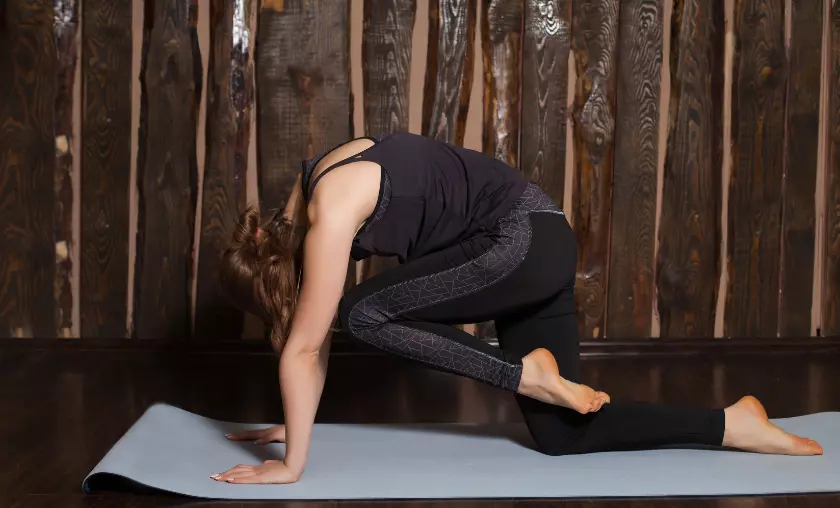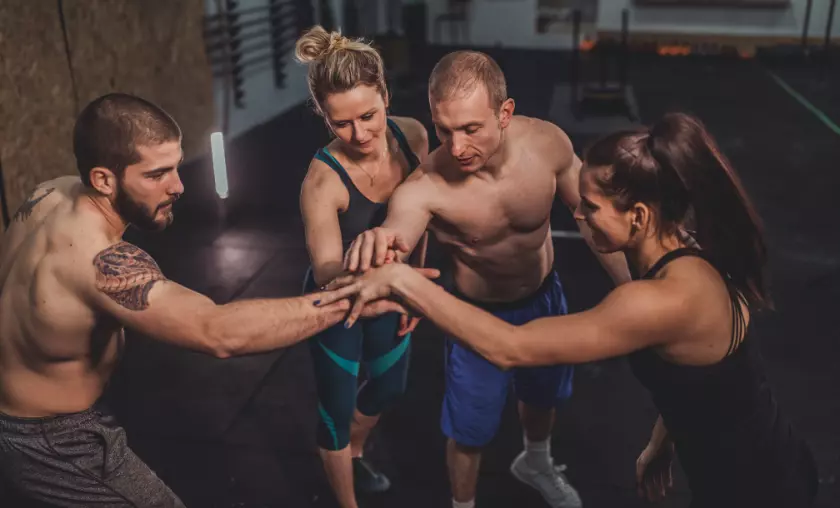Hey there, fitness enthusiasts and goal-getters! Are you ready to embark on a journey that transforms your body? You’re in the right place because we’re about to dive headfirst into the exciting world of targeted gym workouts for specific goals.
You know what they say, “A goal without a plan is just a wish.” In this section, we will not just wish for a fitter, healthier you. Nope, we will make it happen, and here’s how!
Gym Workouts for Specific Goals
Before we jump into the nitty-gritty of gym workouts, let’s talk about the importance of setting the stage for success. You’re about to embark on a road trip. What’s the first thing you do? You put a destination, right? Well, achieving your fitness goals is a bit like that road trip. You need a clear destination in mind.
Setting Specific Goals
Gym Workouts for Specific GoalsDefining Your Fitness Ambitions

So, what’s your fitness destination? Is it shedding those extra pounds? Building some serious muscle? Or it could be improving your cardiovascular health. Whatever it is, the first step is to define your fitness ambitions.
Let’s break it down. Do you want to lose weight? How much weight and by when? Do you want to gain muscle? What areas of your body do you want to focus on? Are you aiming to run a marathon or be able to climb a flight of stairs without getting winded?
Setting specific goals means getting down to the nitty-gritty details. It’s not just saying, “I want to get fit.” It’s about saying, “I want to lose 20 pounds in the next six months by following a structured workout and nutrition plan.”
Why Specific Goals Are Key

Now, why are specific goals so crucial? Let’s put it this way: If you were planning that road trip without a clear destination, how would you know which route to take, what to pack, or even when to start?
Specific goals provide you with direction. They give you a roadmap to follow. Without them, it’s like trying to hit a bullseye blindfolded. You might get lucky, but more often than not, you’ll miss the mark.
Think of specific goals as your fitness GPS. They help you stay on track, measure progress, and, most importantly, stay motivated. When you can see that you’re getting closer to your destination, it’s a powerful incentive to keep going.
So, whether your goal is to fit into those skinny jeans, rock a six-pack, or lead a healthier life, specificity is your best friend on this journey.
Choosing the Right Workouts
Gym Workouts for Specific GoalsCustomizing Your Workout Plan

Okay, let’s talk about the first crucial step on your fitness journey: customizing your workout plan. One size does not fit all when it comes to exercise, and trust me, this is where the magic happens.
Remember when we talked about setting specific goals? Now, it’s time to use those goals as your fitness compass. Your workout plan should be tailored to what you want to achieve.
If your goal is to cut those extra pounds and reveal a slimmer you, your workout plan should focus on burning calories and boosting your metabolism. On the other hand, if you’re looking to build some serious muscle, your project needs to prioritize strength training and muscle-building exercises.
Here’s a Tip
Consult a fitness expert or a personal trainer if you need help figuring out where to start. They can help you create a customized plan that aligns perfectly with your goals.
The Importance of Exercise Variety

Variety is the spice of life and the secret sauce to a successful workout plan. Doing the same workout day in and day out can lead to boredom and, worse, a plateau in your progress.
Imagine eating reapeatly meal for breakfast, lunch, and dinner daily. You’d probably get tired of it quickly. The same goes for your workouts. Your body needs different challenges to keep growing and improving.
So, mix it up! Incorporate a diffrent exercises into your routine. Feel free to try new things, whether yoga, Pilates, kickboxing, or even dance workouts. Not only will this keep things interesting, but it will also work for different muscle groups and prevent overuse injuries.
Gym Workouts for Weight Loss
Gym Workouts for Specific GoalsShedding Pounds: The Ultimate Guide

First, to lose weight, you need to create a calorie deficit. That means you’re burning more calories than you’re consuming. And what’s the most effective way to do that? Cardio, my friends!
Cardio workouts like running, cycling, and swimming are your best buddies in the battle against excess fat. They torch calories and get your heart rate pumping. Aim for at least 150 minutes of moderate-intensity cardio weekly, and watch the fat melt away.
But here’s the kicker: High-intensity interval training, or HIIT, takes things to a new level. HIIT workouts involve short bursts of all-out effort followed by brief recovery periods. They’re like the turbo boosters of fat burning. In just 20-30 minutes, you can torch calories, boost your metabolism, and keep burning fat even after exercising.
Strength Training for Lean Muscle

Cardiovascular exercise is excellent for calorie burning, but when it comes to crafting a lean, well-defined physique, you simply can’t underestimate the benefits of strength training. Engaging in weightlifting, or even utilizing your own body weight, is instrumental in developing lean muscle mass. Remember, the more muscle you have, the greater the number of calories your body naturally consumes during periods of rest.
But wait, I’m not talking about bulking up like a bodybuilder (unless that’s your goal). Strength training for weight loss is about using moderate weights and higher repetitions to tone and define your muscles.
Compound exercises like squats, deadlifts, and bench presses are your go-to moves. They work multiple muscle groups simultaneously, giving you more bang for your buck. Aim for two to three strength training sessions per week, and you’ll be well on your way to a leaner, meaner you.
Building Muscle and Strength
Gym Workouts for Specific GoalsSculpting Your Dream Physique

Let’s start by discussing the dream physique you’ve always fantasized about. Whether you want to rock those beach-ready biceps, carve out those chiseled abs, or look and feel more powerful, building muscle and strength is your golden ticket.
The Science of Muscle Growth

Before jumping into the gym and pumping iron, let’s briefly touch on the science of muscle growth. It’s like understanding the rules of the game before you play.
Muscle development occurs when muscles experience tension and resistance. Engaging in weightlifting or resistance exercises causes microscopic tears to form within your muscle fibers. Subsequently, your body undergoes a restorative process, resulting in thicker and more resilient muscles. This process of adaptation is commonly referred to as muscle growth.
Here’s the cool part: muscle growth doesn’t just make you look buff; it also boosts your metabolism, making it easier to shed unwanted fat. More muscle means more calories burned, even when chilling on the couch watching Netflix.
Compound Exercises for Power

Now, let’s get down to business. Building muscle and strength doesn’t mean you need a gazillion different exercises. In fact, you can achieve remarkable results with a handful of powerhouse moves called compound exercises.
Compound exercises work for multiple muscle groups simultaneously, giving you the most bang for your buck. These exercises will help you sculpt your dream physique without spending hours in the gym.
Remember, proper form is crucial to avoid injury. If you’re new to these exercises, consider getting guidance from a knowledgeable trainer. Let’s switch gears and talk about cardio because a healthy heart is just as crucial as looking swole!
Improving Cardiovascular Health
Gym Workouts for Specific GoalsCardio Workouts for a Strong Heart

Cardiovascular health is essential but not just about preventing heart disease. Cardio workouts also enhance your endurance, improve your mood, and help you torch calories like a champ.
So, what’s the deal with cardio? It gets your heart pumping and your blood flowing, which is fantastic for overall health. Plus, it can help you recover faster between sets during your strength training sessions, allowing you to push harder and gain more.
Now, when we say cardio, we’re not just talking about boring treadmill slogs (although those are fine if you enjoy them). There are tons of fun ways to get your heart rate up.
The Benefits of Interval Training

One word: intervals. High-intensity interval training (HIIT) is like the superhero of cardio workouts. It involves short bursts of intense effort followed by brief rest or lower-intensity periods.
HIIT is a time-saver because you can get a killer workout in 20-30 minutes. It’s also highly effective for burning calories, improving endurance, and even boosting your metabolism for hours after exercising.
Here’s a quick HIIT workout you can try:
Interval training doesn’t just keep your workouts exciting and challenges your body in different ways, which is excellent for overall fitness.
Endurance Training for Stamina

But what if you’re more of a long-distance lover than a sprinter? Endurance training has got your back. Long, steady-state cardio workouts (like running, cycling, or swimming) are fantastic for building stamina and improving cardiovascular health.
Endurance training teaches your heart to pump efficiently and your muscles to keep going for extended periods. It’s perfect if you’re training for a marathon, love going on long hikes, or want the kind of stamina that leaves your friends in awe during your next hiking trip.
Remember, consistency is key whether you’re into HIIT or endurance training. Aim for at least 150 minutes of moderate-intensity cardio per week, and you’ll be well on your way to a strong heart and a leaner body.
Enhancing Flexibility & Mobility
Gym Workouts for Specific GoalsThe Forgotten Aspects of Fitness

When we think about fitness, what usually comes to mind? Sweating it at the gym, lifting weights, and conquering cardio workouts. Well, it’s time to shine a spotlight on two essential elements that often take a backseat – flexibility and mobility.
Yoga and Stretching for Flexibility

Let’s start with flexibility. If you’ve ever watched a yogi twist themselves into a pretzel or effortlessly fold in half, you’ve witnessed the power of flexibility. But here’s the thing – you don’t need to be a contortionist to benefit from yoga.
Yoga is like a magic potion for your body. It improves flexibility and enhances strength, balance, and mental clarity. Plus, it’s incredibly accessible. You can do it at home, in a park, or in a fancy yoga studio – wherever you feel most zen.
Now, you don’t have to jump straight into advanced poses like the “King Pigeon” or “Scorpion.” Start with beginner-friendly poses like “Downward Dog,” “Child’s Pose,” or “Cat-Cow.” These poses gently stretch your muscles and help improve flexibility over time.
If you’re not into yoga, no worries. Traditional stretching can do wonders for your flexibility, too. The key is to incorporate it into your daily routine.
Stretching can be done anytime, anywhere. You can do a quick stretch in the morning to wake up your muscles or take short stretch breaks during the day if you have a desk job. It’s all about finding what works for you.
Focus on major muscle groups like your legs, back, chest, and shoulders. Hold each stretch for about 15-30 seconds, breathing deeply and relaxing into the stretch. Flexibility is a journey, not a destination, so be patient with yourself.
Mobility Drills for Active Lifestyles

Now, let’s shift our attention to mobility. While flexibility is about lengthening muscles, mobility is how freely your joints move. It’s about being able to bend, twist, and turn without feeling like the Tin Man from “The Wizard of Oz.”
Good mobility can enhance your athletic performance, prevent injuries, and make everyday movements feel more effortless. Whether you’re an athlete or want to move pain-free, mobility is your best friend.
One way to improve mobility is through dynamic exercises. These movements take your joints through their full range of motion, warming up your body and preparing it for action.
Some excellent dynamic mobility exercises include leg swings, arm circles, and hip rotations. These exercises increase joint mobility and improve blood flow to your muscles, reducing the risk of injury.
Another effective way to enhance mobility is through foam rolling and self-myofascial release. It sounds fancy, but it’s essentially using a foam roller (or a tennis ball) to apply pressure to tight muscles and fascia, helping to release tension and improve mobility.
Foam rolling can be a bit uncomfortable at first, but the relief you’ll feel afterward is worth it. Focus on tight areas, like your calves, hamstrings, quads, and upper back.
Incorporate these mobility drills into your routine, and you’ll notice a significant improvement in how your body moves and feels. Flexibility and mobility aren’t just for contortionists; they’re for anyone who wants to move and feel better.
Staying Motivated & Consistent
Gym Workouts for Specific GoalsOvercoming Workout Plateaus

Now that we’ve covered fitness’s physical aspects let’s dive into the mental game – staying motivated and consistent. We’ve all been there – hitting a workout plateau, where progress seems slower than a snail on a lazy Sunday.
But fear not; plateaus are just temporary roadblocks on your fitness journey. The key is to shake things up. Try new exercises, increase the intensity of your workouts, or change your routine altogether. Your body loves surprises, and switching things up can kickstart progress.
The Role of Tracking Progress
One of the best ways to stay motivated is by tracking your progress. It’s like leveling up in a video game – seeing your strength, endurance, and flexibility improve can be incredibly rewarding.
Keep a workout journal or use fitness apps to log your workouts, take measurements, and snap progress photos. Looking back and seeing how far you’ve come is like a high-five from your future self.
Finding Your Fitness Community

Let’s remember the power of a supportive community. Whether joining a fitness class, finding a workout buddy, or connecting with like-minded individuals online, having a fitness community can be a game-changer.
You’re more likely to stay motivated and accountable when you’re part of a group that shares your goals. Plus, you’ll have people to celebrate your victories with and lift you up when feeling down.
Nutrition for Your Goals
Gym Workouts for Specific GoalsFueling Your Body for Success

Fueling your body for success. Think of your body as a high-performance car – it needs the correct type of fuel to run efficiently and, in this case, to achieve your fitness goals.
First, just like your fitness goals, you must define your nutrition ambitions. Are you looking to lose weight, gain muscle, or maintain a healthy lifestyle? Knowing your destination will help you map out the best route.
Now, let’s talk calories. To shed those extra pounds, you must create a calorie deficit – consuming fewer calories than you burn. On the flip side, if you aim to gain muscle, you’ll need a calorie surplus. And for maintenance, it’s all about balancing those calories.
But it’s not just about the number of calories but also the quality. Opt for nutrient-dense foods like fruits, vegetables, lean proteins, and whole grains. These goodies will give your body essential vitamins, minerals, and fiber to keep running smoothly.
Balancing Macros and Micros

Speaking of quality, let’s dive into macros (macronutrients) and micros (micronutrients).
Macronutrients: The Big Three
Balancing these macros is crucial for your goals. Protein becomes your best buddy for muscle repair and growth if you’re hitting the gym hard. Carbs provide the energy you need for those intense workouts. And don’t fear fats; they’re essential for overall health.
Micronutrients: The Unsung Heroes
While macros get all the attention, micronutrients (vitamins and minerals) are the unsung heroes of nutrition. They play a crucial role in everything from energy production to immune function.
Fruits and veggies are your go-to sources for these micronutrients. Each color represents different vitamins and minerals, so aim for a rainbow on your plate. Remember, a diet rich in micronutrients supports your fitness goals and boosts your overall health.
Supplements for Enhanced Performance

Now, let’s talk about supplements. While it’s best to get your nutrients from whole foods, supplements can be a helpful addition to your nutrition strategy.
First, just like your fitness goals, you must define your nutrition ambitions. Are you looking to lose weight, gain muscle, or maintain a healthy lifestyle? Knowing your destination will help you map out the best route.
First, just like your fitness goals, you must define your nutrition ambitions. Are you looking to lose weight, gain muscle, or maintain a healthy lifestyle? Knowing your destination will help you map out the best route.
BCAAs are a group of amino acids that help reduce muscle soreness and promote muscle recovery. They can be particularly useful if you’re engaging in intense workouts.
A daily multivitamin can provide a safety net if you’re worried about not getting enough micronutrients from your diet. It ensures you’re getting all essential vitamins and minerals.
Remember, supplements should complement your diet, not replace it. Always consult a healthcare professional before adding new supplements to your regimen.
Recovery & Rest
Gym Workouts for Specific GoalsNow that we’ve covered what goes into your body let’s talk about what happens when you’re not eating – recovery and rest. These two aspects are often underestimated but are critical for achieving your fitness goals.
The Importance of Rest Days

Imagine if your car ran 24/7 without a break – it would eventually break down. The same goes for your body. Rest days are like pit stops, essential for repairing and rejuvenating your muscles.
On rest days, your muscles have time to repair and grow. More than working them with sufficient rest can lead to overtraining, injuries, and burnout. So, don’t skip those rest days; they’re part of the process.
Rest days aren’t just about physical recovery; they’re about mental recovery, too. Taking a break from your regular workout routine can help prevent exercise burnout and keep you motivated in the long run.
Sleep’s Impact on Transformation

Now, let’s talk about one of the most underrated tools in your fitness arsenal – sleep. A good night’s sleep isn’t just about feeling refreshed; it’s about progressing toward your goals.
During deep sleep, your body releases growth hormones crucial for muscle repair and growth. If you skimp on sleep, you must catch up on a significant portion of your gains.
Lack of sleep can mess with your hunger hormones. It increases ghrelin, the hunger hormone while decreasing leptin, which signals fullness. This can lead to overeating and weight gain.
Have you ever tried working out on little sleep? It’s like dragging a sack of potatoes. Sleep deprivation can impair cognitive function, mood, and motivation, making it harder to stick to your fitness routine.
So, how much sleep do you need? Most adults should aim for 7-9 hours of sleep each night. Prioritize sleep, like your workouts and nutrition, and watch how it transforms your progress.
Post-Workout Recovery Strategies

Lastly, let’s talk about post-workout recovery strategies. What you do after your workouts can impact how you feel the next day and how well your body adapts to exercise.
Immediately after a workout, your body is like a sponge, ready to absorb nutrients. Consuming a mix of protein and carbohydrates within 30-60 minutes post-workout can help kickstart recovery.
Remember those dynamic mobility exercises we talked about earlier? Well, post-workout is an excellent time to incorporate them. Stretching and mobility work can help reduce muscle soreness and improve flexibility.
Remember to hydrate! Sweating during exercise can lead to dehydration, affecting your performance and recovery. Rehydrate with water or a sports drink that replenishes electrolytes.
Consider active recovery activities like light yoga, swimming, or a leisurely bike ride on rest days. These low-intensity exercises can improve circulation, reduce muscle soreness, and keep you in the fitness groove.
Monitoring Your Progress
Gym Workouts for Specific GoalsHey there, fitness warriors! If you’ve been following along on our fitness journey, you’ve learned about setting goals, the importance of workouts, and even the significance of rest and nutrition. Now, it’s time to talk about the GPS of your fitness expedition – monitoring your progress.
Tracking Your Fitness Journey
First, how do you know you’re on the right path if you need to keep tabs on your journey? Think of progress tracking as your fitness GPS – it helps you stay on course, navigate challenges, and reach your destination.
One simplest and most effective ways to monitor your progress is by keeping a workout journal. It doesn’t have to be fancy; a notebook or a fitness app will do the trick.
In your journal, record each workout session. Note the exercises, sets, reps, and weights used. This serves as a reference point to ensure you’re gradually increasing the intensity of your workouts.
While the number on the scale can be a helpful indicator, it doesn’t tell the whole story. Muscle weighs more than fat, so you might not see a significant drop in weight even if you’re getting fitter.
Instead, consider taking measurements of key areas like your waist, hips, chest, arms, and thighs. Also, snap progress photos from different angles. These visual cues can provide a more accurate picture of your transformation.
In our tech-savvy world, there’s an app for everything, including fitness tracking. Whether it’s MyFitnessPal, Fitbit, or Apple Health, these apps can help you monitor your workouts, nutrition, and sleep patterns.
Another fantastic way to track progress is by scheduling regular fitness assessments. These assessments can include measurements, body composition analysis, and fitness tests to measure your strength, endurance, and flexibility.
Having a baseline and tracking changes over time can show tangible evidence of your progress. Plus, fitness assessments can motivate you to stay committed to your goals.
Celebrating Milestones

Now, let’s talk about the fun part – celebrating milestones. Achieving your fitness goals is a journey; along the way, some mini-victories deserve to be celebrated.
Before you start your fitness journey, break down your overarching goal into smaller, manageable milestones. For example, if you want to lose 50 pounds, set milestones for every 5 or 10 pounds lost.
Remember, not all victories are on the scale. Celebrate non-scale achievements like fitting into an old pair of jeans, running a faster mile, or simply feeling more energetic. These victories are just as important, if not more so, than the numbers on the scale.
When you hit a milestone, reward yourself (without derailing your progress, of course). Treat yourself to something special: a spa day, a new workout outfit, or a guilt-free cheat meal.
Adjusting Your Goals as Needed

Fitness isn’t static; it’s a dynamic journey. As you progress, your goals may evolve too. And that’s perfectly fine! Adjusting your dreams is a sign of growth and adaptability.
Periodically reassess your goals and ask yourself if they align with your aspirations and lifestyle. You may have achieved your initial goal of losing 20 pounds and now want to focus on building muscle. Or perhaps you’ve fallen in love with running and want to train for a half marathon.
Once you’ve reached a goal, it’s time to set new challenges. This keeps your fitness journey exciting and prevents complacency. New challenges can be anything from tackling a new fitness class to improving your performance in a specific exercise.
Seek inspiration from others who have achieved similar goals or have overcome obstacles. Follow fitness blogs social media accounts, or join fitness communities to connect with like-minded individuals who can offer guidance and motivation.
Conclusion
In the fitness world, it’s not just about the destination but the journey itself. The sweat, dedication, setbacks, and triumphs all shape you into a stronger, healthier, and more resilient individual.
So, as you embark on your fitness journey, remember that progress isn’t always linear. There will be ups and downs, but each step forward is a step toward your dream body, no matter how small.
Celebrate your big and small victories, and be open to adjusting your goals as you grow. Embrace the journey, and most importantly, enjoy the process of transforming not only your body but also your mindset and lifestyle.
With targeted gym workouts, determination, and a dash of self-compassion, you have everything you need to achieve your fitness goals. So, keep moving, tracking, and celebrating because the path to your dream body is a rewarding adventure!
FAQs
What are specific goals in the context of gym workouts?
Specific goals in the gym context are precise fitness objectives you set for yourself. Instead of saying, “I want to get fit,” you might specify, “I want to lose 20 pounds, increase my bench press by 50 pounds, or run a 10K race in under an hour.” These goals give your workouts purpose and direction.
How do I determine my specific fitness goals?
Determining your specific fitness goals starts with self-reflection. Ask yourself what you want to achieve with your workouts. Do you want to lose weight, gain muscle, improve endurance, or enhance flexibility? Once you’ve identified your objectives, you can tailor your workouts accordingly.
Can I have multiple specific fitness goals simultaneously?
Yes, you can have multiple specific fitness goals, but it’s essential to prioritize them. Focusing on too many goals at a time can be overwhelming and counterproductive. Consider setting short-term and long-term goals and adjusting your workout plan to work towards them individually.
How often should I reassess my specific fitness goals?
Reassessing your fitness goals is essential to ensure they remain relevant and achievable. Depending on your progress and the complexity of your dreams, aim to reassess every 4-12 weeks. This allows you to celebrate achievements, tweak your plan, and set new goals as needed.
What role does nutrition play in achieving specific fitness goals?
Nutrition is a critical factor in achieving specific fitness goals. Your diet provides the fuel and building blocks your body needs for muscle growth, fat loss, and overall performance. To align your nutrition with your goals, focus on balanced macros (protein, carbs, fats) and prioritize nutrient-dense foods.
To read more similar articles, click here
Thanks for visiting our Website. If you appreciate our work, kindly show us some support in our comments section 🙂



